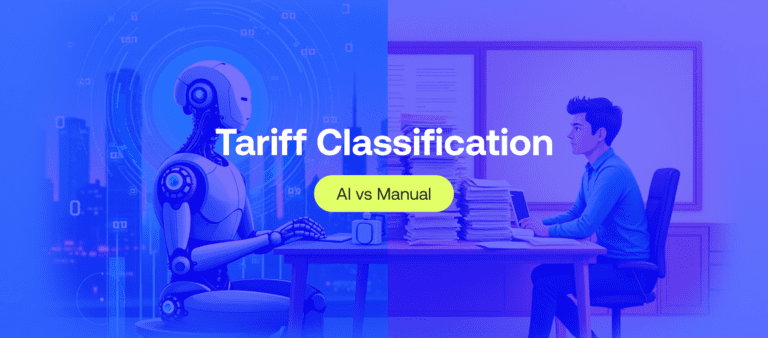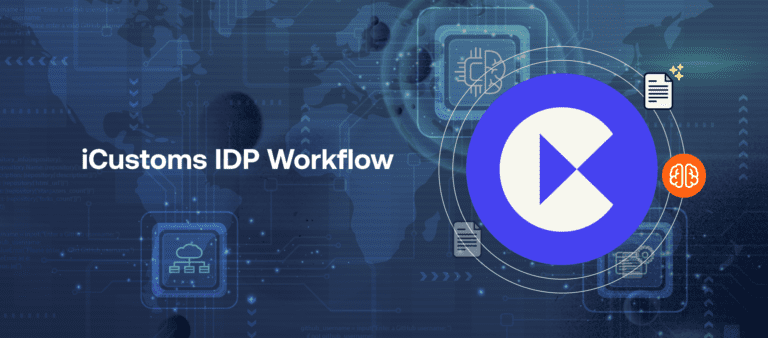Fast & Accurate ENS GB & EU ICS2 Solutions Built for You.
AI Tariff Classification vs. Manual: A Comparative Analysis
- Freya Jane
- Director of Customer's Success
What if a single incorrectly classified product causes your company to face fines, delays, and even goods seizures?
Tariff or goods classification isn’t just a legal formality; it is the foundation of international trade, which ensures goods cross borders smoothly.
For decades, companies have been using trade compliance specialists to manually categorise goods using the Harmonised System (HS). Despite its effectiveness, this approach is laborious, erratic, and prone to human errors.
However, businesses now have a quicker, more precise, and scalable option thanks to the development of artificial intelligence (AI). AI-powered classification technologies make manual classification seem outdated by processing large datasets, lowering errors, and increasing productivity through automation and machine learning.
So, will AI eventually be used in tariff classification? Let us go through the comparison and look at the factors that lead to business transitions.
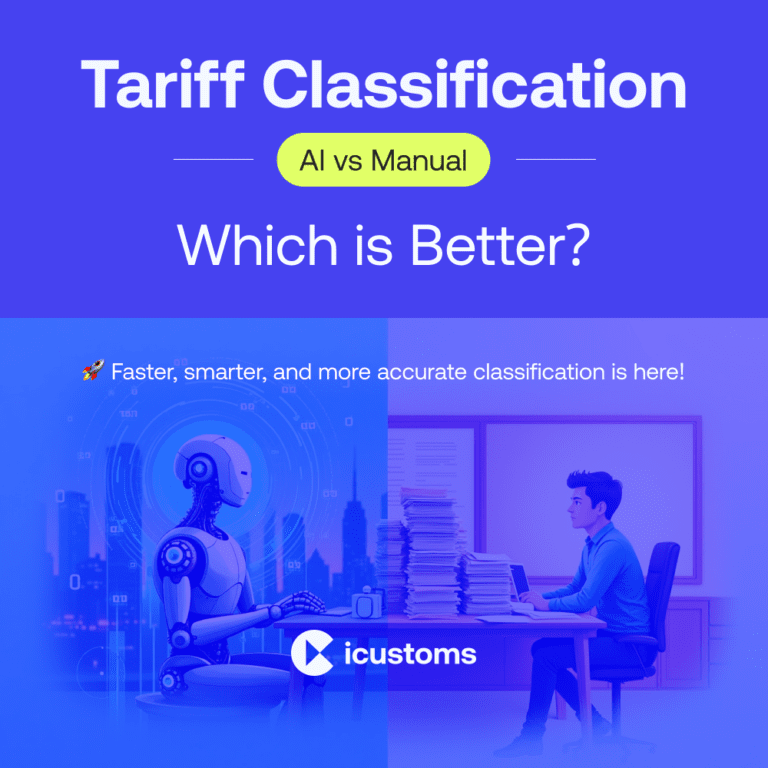
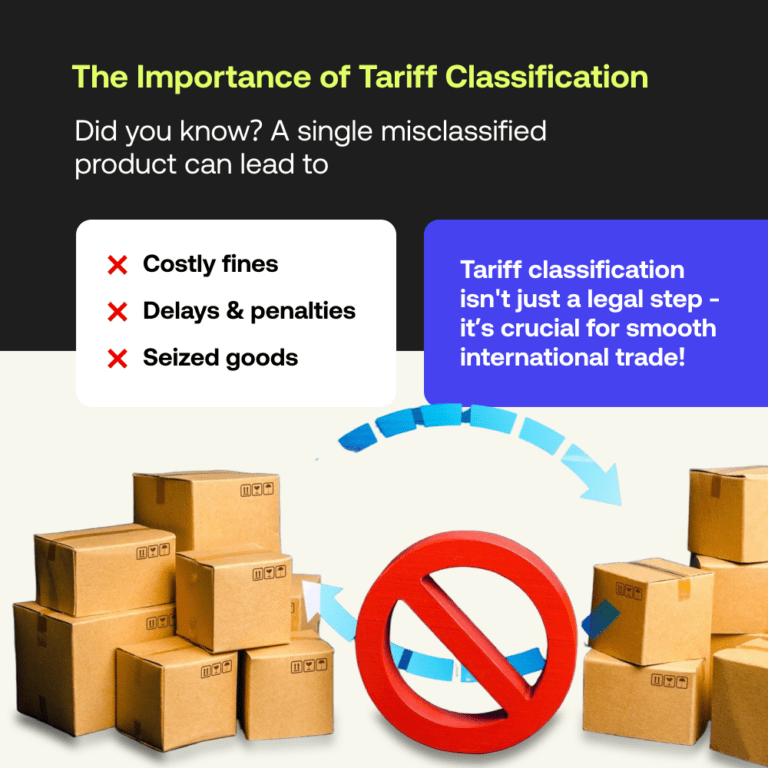
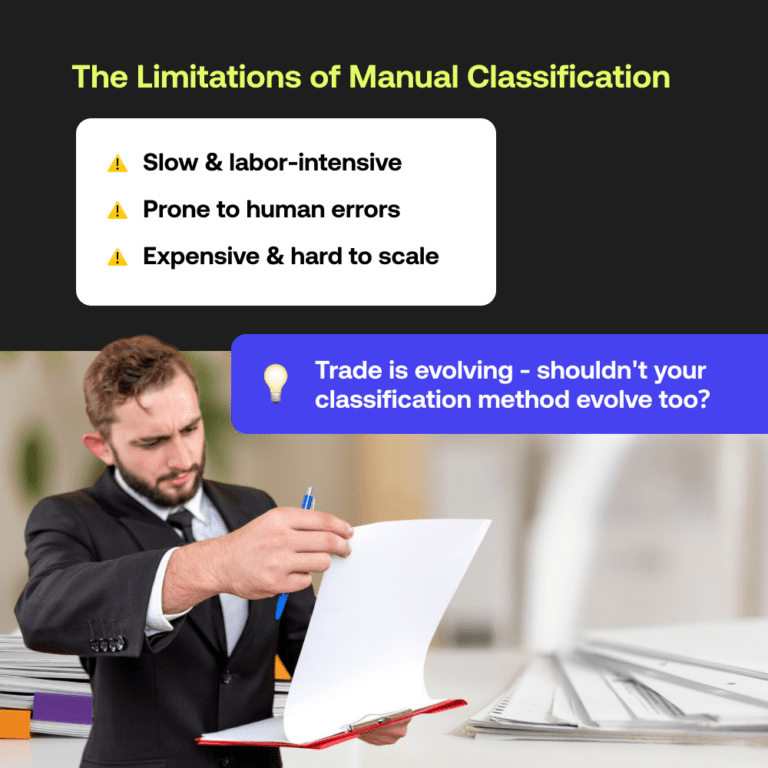
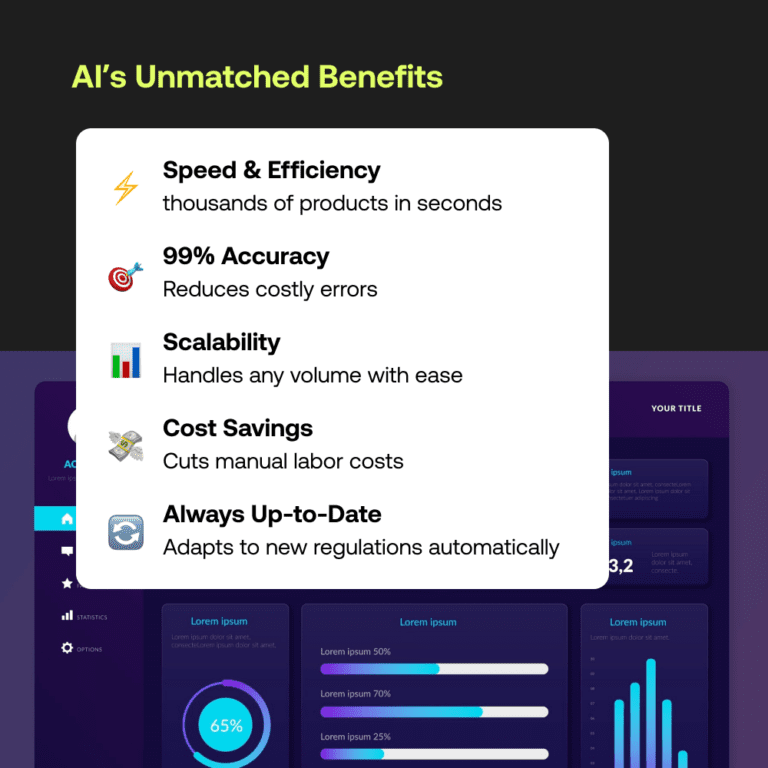

Manual tariff classification
In trade compliance, manual tariff classification has been used for a long time. It depends on human expertise to evaluate product descriptions, look up tariff schedules, and identify the appropriate HS codes. To correctly identify products, experts refer to past trade decisions and the General Rules of Interpretation (GRI).
Manual classification can have some benefits, but it also comes with many challenges.
Advantages of manual tariff classification
- Expertise: Skilled experts can interpret unclear or imprecise product descriptions and comprehend the subtleties of intricate regulations.
- Customisation: Humans can adapt to unique situations, such as new products or evolving trade laws, where predefined rules may not apply.
- Accountability: Human classifiers can provide explanations and justifications for their decisions, which is often required in audits or disputes.
Disadvantages of manual classification
- Time-consuming: Manually assigning HS codes can be a laborious and slow operation, particularly for companies that have big product catalogs.
- Inconsistencies: Human interpretation may vary between different classifiers, leading to inconsistent classifications.
- Scalability problems: Manual product classification grows ineffective and resource-intensive as trade volumes rise.
- Increased costs: Hiring qualified experts for classification can be expensive, particularly when handling intricate or frequent transactions.
AI-Powered tariff classification
AI-driven tariff classification automates the assignment of HS codes through the use of large datasets, machine learning algorithms, and Natural Language Processing (NLP). To identify the most accurate tariff codes, these systems examine product descriptions, legal requirements, and previous classification data.
AI classification is more reliable and beneficial than manual classification, but some companies may find it a bit challenging. Below are the potential advantages and disadvantages of AI-powered classification:
Advantages of AI classification
- Speed & efficiency: The time needed for tariff classification can be greatly decreased by using AI, which can classify thousands of items in a matter of seconds. For instance, it can help freight forwarders, importers/exporters, or other businesses that are involved in international trade to save time and improve productivity.
- Increased accuracy: Large datasets are used to train AI systems, guaranteeing 99% accuracy in the classification of the goods. AI reduces classification errors and increases compliance rates by ensuring data precision.
- Scalability: AI tools can classify multiple goods effortlessly. AI-driven classification systems may grow without the need for more human resources, regardless of the volume of items being handled.
- Cost effective: Businesses can cut operating expenses and their need for manual labor by automating classification processes. AI reduces the need to hire classification specialists, which has long-term economic advantages.
- Real-time adaptability: AI-powered systems are always learning and changing in response to past classification trends and new regulation updates. This eliminates the need for laborious manual research and guarantees that businesses stay in compliance with the most recent customs laws.
AI vs. Manual Classification: The Clear Winner
Let iCustoms AI handle your product classification!
Imagine a system that can quickly classify your products, remove costly errors, and stay up to date with changing trade laws without your intervention. This is exactly what iCustoms AI-powered iClassification tool does.
Businesses can rely on AI-driven automation that learns, adapts, and maintains 99% accuracy instead of spending hours manually assigning HS codes. iCustoms scales easily and integrates with your trade systems for a smooth process, regardless of how many shipments you handle.
You may also like:
Simplify Customs with our Powerful Customs Management Software
Automate declarations, track shipments, & ensure compliance.
About iCustoms
Simplify Customs with our Powerful Customs Management Software
Automate declarations, track shipments, & ensure compliance.

